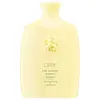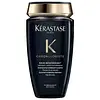What's inside
What's inside
 Key Ingredients
Key Ingredients

 Benefits
Benefits

 Concerns
Concerns

 Ingredients Side-by-side
Ingredients Side-by-side

Water
Skin ConditioningSodium Cocoyl Isethionate
CleansingSodium Lauroyl Methyl Isethionate
CleansingCaprylyl/Capryl Glucoside
CleansingSodium C14-16 Olefin Sulfonate
CleansingSodium Cocoyl Glycinate
CleansingParfum
MaskingDisodium Cocoamphodipropionate
CleansingLauramidopropyl Betaine
CleansingAcrylates Crosspolymer-4
Emulsion StabilisingCoconut Acid
CleansingSorbeth-230 Tetraoleate
EmulsifyingCitric Acid
BufferingPhenoxyethanol
PreservativePolyquaternium-73
Hydroxyacetophenone
AntioxidantSodium Isethionate
CleansingLinoleamidopropyl Pg-Dimonium Chloride Phosphate
Silicone Quaternium-22
Chlorphenesin
AntimicrobialSodium Methyl Isethionate
EmulsifyingSodium Cocoyl Glutamate
CleansingGlycol Stearate
EmollientPolyquaternium-67
Decyl Glucoside
CleansingLauric Acid
CleansingPropylene Glycol
HumectantPotassium Hydroxide
BufferingPanthenol
Skin ConditioningSodium Sulfate
Dipropylene Glycol
HumectantPolyglyceryl-3 Caprate
EmulsifyingTetrasodium Glutamate Diacetate
Glyceryl Caprylate
EmollientPolyglyceryl-6 Oleate
EmulsifyingSorbitan Laurate
EmulsifyingOryza Sativa Bran Extract
Skin ConditioningGlycerin
HumectantGlycol Distearate
EmollientSalvia Hispanica Seed Extract
EmollientSodium Laurate
CleansingCocamidopropyl Betaine
CleansingQuaternium-95
UV AbsorberCinnamidopropyltrimonium Chloride
Sodium Benzoate
MaskingSodium Surfactin
CleansingHelianthus Annuus Extract
EmollientSodium PCA
HumectantPropanediol
SolventSodium Lactate
BufferingLactobacillus/Arundinaria Gigantea Leaf Ferment Filtrate
Skin ConditioningLitchi Chinensis Fruit Extract
Skin ConditioningPalmitamidopropyltrimonium Chloride
Sodium Hydroxide
BufferingArginine
MaskingButylene Glycol
HumectantHydrolyzed Rice Protein
Skin ConditioningGalactoarabinan
Tocopheryl Acetate
AntioxidantAspartic Acid
MaskingRosmarinus Officinalis Leaf Extract
AntimicrobialTocopherol
AntioxidantSodium Acetate
BufferingPCA
HumectantTrehalose
HumectantXylitol
HumectantLeontopodium Alpinum Extract
Skin ConditioningPanthenyl Hydroxypropyl Steardimonium Chloride
Hydrolyzed Vegetable Protein Pg-Propyl Silanetriol
Skin ConditioningCamellia Sinensis Leaf Extract
AntimicrobialLeuconostoc/Radish Root Ferment Filtrate
AntimicrobialArctium Lappa Root Extract
Skin ConditioningHedera Helix Extract
AntimicrobialTrigonella Foenum-Graecum Seed Extract
PerfumingGlycine
BufferingSodium Phosphate
BufferingAlanine
MaskingCitrullus Lanatus Seed Oil
EmollientDimethiconol Meadowfoamate
EmollientIsopropyl Alcohol
SolventPentylene Glycol
Skin ConditioningSerine
MaskingValine
MaskingIsoleucine
Skin ConditioningProline
Skin ConditioningThreonine
Potassium Sorbate
PreservativeEclipta Prostrata Extract
Skin ConditioningLonicera Japonica Flower Extract
Skin ConditioningSodium Acetylated Hyaluronate
HumectantCaprylyl Glycol
EmollientSodium Hyaluronate
HumectantHistidine
HumectantPhenylalanine
MaskingEthylhexylglycerin
Skin ConditioningDisodium EDTA
Sodium Hyaluronate Crosspolymer
HumectantPentaerythrityl Tetra-Di-T-Butyl Hydroxyhydrocinnamate
AntioxidantHydrolyzed Sodium Hyaluronate
Skin ConditioningLimonene
PerfumingHexyl Cinnamal
PerfumingWater, Sodium Cocoyl Isethionate, Sodium Lauroyl Methyl Isethionate, Caprylyl/Capryl Glucoside, Sodium C14-16 Olefin Sulfonate, Sodium Cocoyl Glycinate, Parfum, Disodium Cocoamphodipropionate, Lauramidopropyl Betaine, Acrylates Crosspolymer-4, Coconut Acid, Sorbeth-230 Tetraoleate, Citric Acid, Phenoxyethanol, Polyquaternium-73, Hydroxyacetophenone, Sodium Isethionate, Linoleamidopropyl Pg-Dimonium Chloride Phosphate, Silicone Quaternium-22, Chlorphenesin, Sodium Methyl Isethionate, Sodium Cocoyl Glutamate, Glycol Stearate, Polyquaternium-67, Decyl Glucoside, Lauric Acid, Propylene Glycol, Potassium Hydroxide, Panthenol, Sodium Sulfate, Dipropylene Glycol, Polyglyceryl-3 Caprate, Tetrasodium Glutamate Diacetate, Glyceryl Caprylate, Polyglyceryl-6 Oleate, Sorbitan Laurate, Oryza Sativa Bran Extract, Glycerin, Glycol Distearate, Salvia Hispanica Seed Extract, Sodium Laurate, Cocamidopropyl Betaine, Quaternium-95, Cinnamidopropyltrimonium Chloride, Sodium Benzoate, Sodium Surfactin, Helianthus Annuus Extract, Sodium PCA, Propanediol, Sodium Lactate, Lactobacillus/Arundinaria Gigantea Leaf Ferment Filtrate, Litchi Chinensis Fruit Extract, Palmitamidopropyltrimonium Chloride, Sodium Hydroxide, Arginine, Butylene Glycol, Hydrolyzed Rice Protein, Galactoarabinan, Tocopheryl Acetate, Aspartic Acid, Rosmarinus Officinalis Leaf Extract, Tocopherol, Sodium Acetate, PCA, Trehalose, Xylitol, Leontopodium Alpinum Extract, Panthenyl Hydroxypropyl Steardimonium Chloride, Hydrolyzed Vegetable Protein Pg-Propyl Silanetriol, Camellia Sinensis Leaf Extract, Leuconostoc/Radish Root Ferment Filtrate, Arctium Lappa Root Extract, Hedera Helix Extract, Trigonella Foenum-Graecum Seed Extract, Glycine, Sodium Phosphate, Alanine, Citrullus Lanatus Seed Oil, Dimethiconol Meadowfoamate, Isopropyl Alcohol, Pentylene Glycol, Serine, Valine, Isoleucine, Proline, Threonine, Potassium Sorbate, Eclipta Prostrata Extract, Lonicera Japonica Flower Extract, Sodium Acetylated Hyaluronate, Caprylyl Glycol, Sodium Hyaluronate, Histidine, Phenylalanine, Ethylhexylglycerin, Disodium EDTA, Sodium Hyaluronate Crosspolymer, Pentaerythrityl Tetra-Di-T-Butyl Hydroxyhydrocinnamate, Hydrolyzed Sodium Hyaluronate, Limonene, Hexyl Cinnamal
Water
Skin ConditioningSodium Laureth Sulfate
CleansingCoco-Betaine
CleansingLaureth-5 Carboxylic Acid
CleansingCocamide Mipa
EmulsifyingSodium Chloride
MaskingIsostearyl Neopentanoate
EmollientPolyquaternium-10
PPG-5-Ceteth-20
EmulsifyingAmodimethicone
Sodium Benzoate
MaskingSodium Hydroxide
BufferingCitric Acid
BufferingPEG-55 Propylene Glycol Oleate
PEG-60 Hydrogenated Castor Oil
EmulsifyingSalicylic Acid
MaskingPropylene Glycol
HumectantBenzyl Salicylate
PerfumingHexyl Cinnamal
PerfumingBenzyl Alcohol
PerfumingLimonene
PerfumingButylene Glycol
HumectantCitronellol
PerfumingGeraniol
PerfumingTocopherol
AntioxidantBisabolol
Masking2-Oleamido-1,3-Octadecanediol
Skin ConditioningSafflower Glucoside
Hydroxycitronellal
PerfumingSodium Hyaluronate
HumectantAlteromonas Ferment Extract
Skin ConditioningBHT
AntioxidantSodium Citrate
BufferingParfum
MaskingCeramide AP
Skin ConditioningWater, Sodium Laureth Sulfate, Coco-Betaine, Laureth-5 Carboxylic Acid, Cocamide Mipa, Sodium Chloride, Isostearyl Neopentanoate, Polyquaternium-10, PPG-5-Ceteth-20, Amodimethicone, Sodium Benzoate, Sodium Hydroxide, Citric Acid, PEG-55 Propylene Glycol Oleate, PEG-60 Hydrogenated Castor Oil, Salicylic Acid, Propylene Glycol, Benzyl Salicylate, Hexyl Cinnamal, Benzyl Alcohol, Limonene, Butylene Glycol, Citronellol, Geraniol, Tocopherol, Bisabolol, 2-Oleamido-1,3-Octadecanediol, Safflower Glucoside, Hydroxycitronellal, Sodium Hyaluronate, Alteromonas Ferment Extract, BHT, Sodium Citrate, Parfum, Ceramide AP
 Reviews
Reviews

Ingredients Explained
These ingredients are found in both products.
Ingredients higher up in an ingredient list are typically present in a larger amount.
Butylene Glycol (or BG) is used within cosmetic products for a few different reasons:
Overall, Butylene Glycol is a safe and well-rounded ingredient that works well with other ingredients.
Though this ingredient works well with most skin types, some people with sensitive skin may experience a reaction such as allergic rashes, closed comedones, or itchiness.
Learn more about Butylene GlycolCitric Acid is an alpha hydroxy acid (AHA) naturally found in citrus fruits like oranges, lemons, and limes.
Like other AHAs, citric acid can exfoliate skin by breaking down the bonds that hold dead skin cells together. This helps reveal smoother and brighter skin underneath.
However, this exfoliating effect only happens at high concentrations (20%) which can be hard to find in cosmetic products.
Due to this, citric acid is usually included in small amounts as a pH adjuster. This helps keep products slightly more acidic and compatible with skin's natural pH.
In skincare formulas, citric acid can:
While it can provide some skin benefits, research shows lactic acid and glycolic acid are generally more effective and less irritating exfoliants.
Most citric acid used in skincare today is made by fermenting sugars (usually from molasses). This synthetic version is identical to the natural citrus form but easier to stabilize and use in formulations.
Read more about some other popular AHA's here:
Learn more about Citric AcidHexyl Cinnamal is a fragrance ingredient with a similar scent to jasmine. It can be naturally found in chamomile essential oil.
This ingredient is a known EU allergen and may sensitize the skin. The EU requires this ingredient to be listed separately on an ingredients list.
Hexyl Cinnamal is not water soluble but is soluble in oils.
Learn more about Hexyl CinnamalLimonene is a fragrance that adds scent and taste to a formulation.
It's found in the peel oil of citrus fruits and other plants such as lavender and eucalyptus. The scent of limonene is generally described as "sweet citrus".
Limonene acts as an antioxidant, meaning it helps neutralize free radicals.
When exposed to air, oxidized limonene may sensitize the skin. Because of this, limonene is often avoided by people with sensitive skin.
The term 'fragrance' is not regulated in many countries. In many cases, it is up to the brand to define this term. For instance, many brands choose to label themselves as "fragrance-free" because they are not using synthetic fragrances. However, their products may still contain ingredients such as essential oils that are considered a fragrance.
Learn more about LimoneneParfum is a catch-all term for an ingredient or more that is used to give a scent to products.
Also called "fragrance", this ingredient can be a blend of hundreds of chemicals or plant oils. This means every product with "fragrance" or "parfum" in the ingredients list is a different mixture.
For instance, Habanolide is a proprietary trade name for a specific aroma chemical. When used as a fragrance ingredient in cosmetics, most aroma chemicals fall under the broad labeling category of “FRAGRANCE” or “PARFUM” according to EU and US regulations.
The term 'parfum' or 'fragrance' is not regulated in many countries. In many cases, it is up to the brand to define this term.
For instance, many brands choose to label themselves as "fragrance-free" because they are not using synthetic fragrances. However, their products may still contain ingredients such as essential oils that are considered a fragrance by INCI standards.
One example is Calendula flower extract. Calendula is an essential oil that still imparts a scent or 'fragrance'.
Depending on the blend, the ingredients in the mixture can cause allergies and sensitivities on the skin. Some ingredients that are known EU allergens include linalool and citronellol.
Parfum can also be used to mask or cover an unpleasant scent.
The bottom line is: not all fragrances/parfum/ingredients are created equally. If you are worried about fragrances, we recommend taking a closer look at an ingredient. And of course, we always recommend speaking with a professional.
Learn more about ParfumPropylene Glycol is an odorless, colorless liquid. As a humectant, it helps skin retain moisture. It also aids in delivering active ingredients.
Another role of this ingredient is preventing a product from melting or freezing. Propylene glycol also adds antimicrobrial properties to a product, elongating product lifespan.
This ingredient is considered an organic alcohol and commonly added into both cosmetics and foods.
Those with sensitive skin or conditions may develop a rash when using this ingredient.
Learn more about Propylene GlycolSodium Benzoate is a preservative. It's used in both cosmetic and food products to inhibit the growth of mold and bacteria. It is typically produced synthetically.
Both the US FDA and EU Health Committee have approved the use of sodium benzoate. In the US, levels of 0.1% (of the total product) are allowed.
Sodium benzoate works as a preservative by inhibiting the growth of bacteria inside of cells. It prevents the cell from fermenting a type of sugar using an enzyme called phosphofructokinase.
It is the salt of benzoic acid. Foods containing sodium benzoate include soda, salad dressings, condiments, fruit juices, wines, and snack foods.
Studies for using ascorbic acid and sodium benzoate in cosmetics are lacking, especially in skincare routines with multiple steps.
We always recommend speaking with a professional, such as a dermatologist, if you have any concerns.
Learn more about Sodium BenzoateSodium Hyaluronate is hyaluronic acid's salt form. It is commonly derived from the sodium salt of hyaluronic acid.
Like hyaluronic acid, it is great at holding water and acts as a humectant. This makes it a great skin hydrating ingredient.
Sodium Hyaluronate is naturally occurring in our bodies and is mostly found in eye fluid and joints.
These are some other common types of Hyaluronic Acid:
Learn more about Sodium HyaluronateSodium Hydroxide is also known as lye or caustic soda. It is used to adjust the pH of products; many ingredients require a specific pH to be effective.
In small amounts, sodium hydroxide is considered safe to use. However, large amounts may cause chemical burns due to its high alkaline.
Your skin has a natural pH and acid mantle. This acid mantle helps prevent harmful bacteria from breaking through. The acid mantle also helps keep your skin hydrated.
"Alkaline" refers to a high pH level. A low pH level would be considered acidic.
Learn more about Sodium HydroxideTocopherol (also known as Vitamin E) is a common antioxidant used to help protect the skin from free-radicals and strengthen the skin barrier. It's also fat soluble - this means our skin is great at absorbing it.
Vitamin E also helps keep your natural skin lipids healthy. Your lipid skin barrier naturally consists of lipids, ceramides, and fatty acids. Vitamin E offers extra protection for your skin’s lipid barrier, keeping your skin healthy and nourished.
Another benefit is a bit of UV protection. Vitamin E helps reduce the damage caused by UVB rays. (It should not replace your sunscreen). Combining it with Vitamin C can decrease sunburned cells and hyperpigmentation after UV exposure.
You might have noticed Vitamin E + C often paired together. This is because it is great at stabilizing Vitamin C. Using the two together helps increase the effectiveness of both ingredients.
There are often claims that Vitamin E can reduce/prevent scarring, but these claims haven't been confirmed by scientific research.
Learn more about TocopherolWater. It's the most common cosmetic ingredient of all. You'll usually see it at the top of ingredient lists, meaning that it makes up the largest part of the product.
So why is it so popular? Water most often acts as a solvent - this means that it helps dissolve other ingredients into the formulation.
You'll also recognize water as that liquid we all need to stay alive. If you see this, drink a glass of water. Stay hydrated!
Learn more about Water